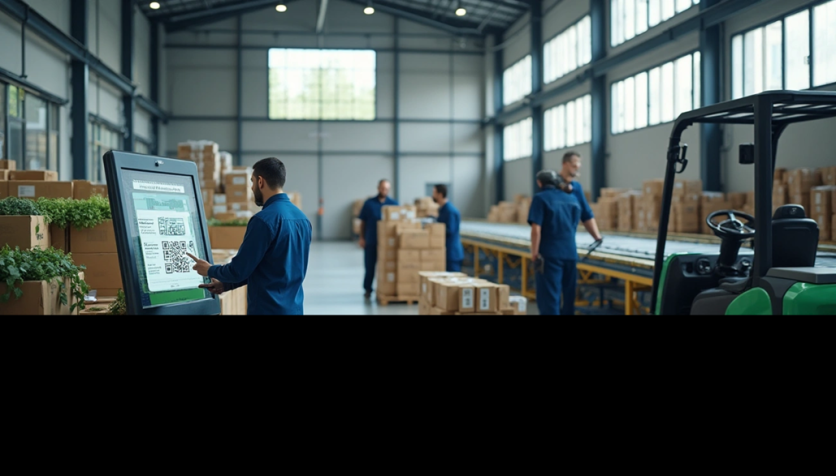
Around $500 billion is lost each year due to global counterfeit products and supply chain fraud. This huge economic loss can now be curbed through the use of blockchain proof-of-green supply chain solutions. Such approaches are also helpful in addressing urgent environmental concerns that arise across the globe. Green hydrogen accounts for only 2% of the EU's total energy consumption, while fossil fuels account for 96%.
Supply chains require transparency that can be verified to the highest level. By utilizing blockchain, it allows for the permanent recording of a product's journey from raw materials to distribution. A revolutionary initiative to verify sustainable and ethical sourcing practices. The security provides a trustworthy audit trail that fosters trust and accountability, which are crucial for the credibility of green initiatives.
Blockchain Closes Data Gaps in Supply Chain Transparency
Supply chain management faces major challenges today because of information gaps and poor visibility. Studies reveal that 45% of supply chain leaders can only see their first-tier suppliers or have no visibility at all. Only 7% can achieve multi-tier transparency. In intricate global supply networks, these blind spots carry significant risks.
The distributed ledger architecture of blockchain technology addresses the challenges of transparency. A single location for information is typical in traditional databases. Through blockchain, information is disseminated among multiple computers and established as a permanent record that can be accessed by authorized users. The decentralized system ensures data integrity and provides a reliable platform for users to document, view, and confirm transactions.
By collaborating with other cutting-edge technologies such as IoT and smart contracts, blockchain can enhance supply chain security. It produces a complete system for prompt monitoring. It does not replace the current enterprise resource planning systems, but it adds value and is compatible with legacy infrastructure.
Blockchain Enables Verifiable Proof-of-Green Practices
The challenge of verifying ethical sourcing persists in global industries. The unchangeable and transparent ledger system of blockchain technology is an innovative solution. It produces records of the movement of products from manufacturer to consumer across different sectors.
By utilizing blockchain, industries like the fashion industry can tackle the challenges of labor exploitation and environmental destruction. Labeling garment production from raw materials to finished goods enables brands to verify ethical labor practices and environmentally conscious material sourcing. Canadian apparel company Tentree is an example of this approach, using blockchain to monitor supply chains for products and fibers.
The same applies to many other sectors, including food, pharmaceuticals, mining, electronics, iGaming, and many more. For instance, in the iGaming industry, blockchain casinos use cryptocurrencies such as Ethereum and Bitcoin for financial transactions. By doing so, it eliminates any restrictions based on player locations, offers more security, bonuses, and lower transaction fees. Blockchain is also used in gaming to prove that the games are fair and not tampered with.
Blockchain Verifies Ethical Sourcing Across Industries
A perfect environment for greenwashing exists because environmental claims are seldom validated. By providing transparent, unchanging systems that verify environmentally conscious practices across supply chains, blockchain technology offers a strong solution. Climate Action Data Trust can prevent the double-counting of carbon emissions. This is made achievable by their decentralized ledger and open verification systems. The inability to alter the information once it is recorded provides a strong indication of environmental sustainability.
Blockchain does more than prevent fraud; it tracks carbon footprints with great precision. The PwC Blockchain Sustainability Framework looks at environmental effects by measuring electricity usage, greenhouse gas emissions, e-waste, and embodied carbon. The use of blockchain in supply chain certification has been demonstrated by companies like Provenance, Walmart, and Maersk. With the implementation of the EU MiCA Regulation, which requires crypto asset issuers to report on sustainability, this ability has become essential.
Future Outlook for Blockchain in Supply Chain Logistics
Blockchain in logistics is a promising area for the next decade. The market forecasts a rise from USD 2.40 billion in 2024 to USD 95.30 billion by 2034, with an impressive 44.5% annual growth rate. Some projections are even more optimistic, indicating that the global market may hit USD 943 billion by 2032.
The use of blockchain technology in supply chains is currently at its initial stage. The emphasis is on research and development rather than broad business adoption. Approximately five thousand scientific publications and about fifty thousand patents have been filed, which is more than double the number of academic interests each year. Almost 1,000 of these patents are considered pioneering.
The next five years are crucial for the integration of blockchain, artificial intelligence, and Internet of Things technologies. The fusion will improve data validation capabilities, provide more accurate delivery forecasting, and simplify supply chain management. Smart contracts will streamline financial transactions and resolve conflicts, decreasing manual errors and eliminating paper-based processes.
ⓒ 2025 TECHTIMES.com All rights reserved. Do not reproduce without permission.





